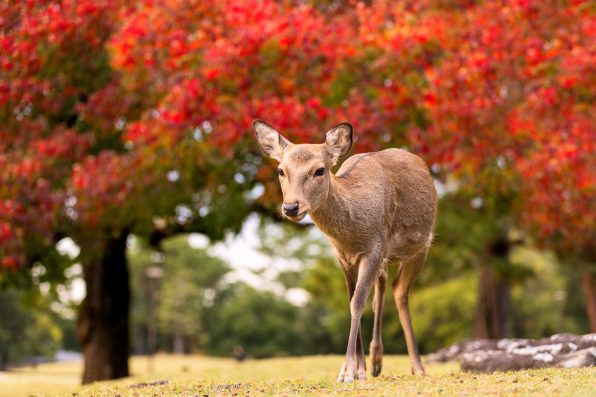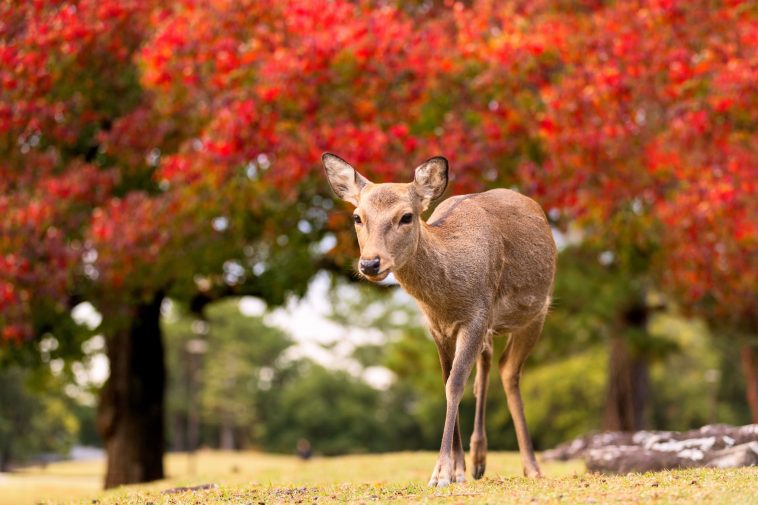For nearly 1,400 years, the sika deer in Japan have remained protected due to their spiritual status in Shintoism, which is Japan’s national religion.
As a result of this long-standing protection, researchers have found that the deer are genetically unique.
A total of 1,200 sika deer live around the Kasuga Taisha Shrine in Nara Park in the city of Nara, the ancient capital of Japan.
Hunting the deer within the grounds of the religious sanctuary was banned, allowing their populations to grow.
Over the last 50 years, the species has spread out from the shrine, taking up space throughout the city and on farms. Today, the deer are known to cause problems, such as destroying crops.
However, their special status has deterred many people from culling them, which is a common solution to overpopulation.
A team of researchers from Fukushima University has discovered that deer living near the shrine have unique mitochondrial DNA that can only be passed from mother to offspring.
The findings underscore the pivotal role that religious and cultural traditions played in preserving the deer’s lineage and how it shapes modern society. The study was published in the Society for Conservation Biology.
According to local legend, one of the four gods of the Kasuga Grand Shrine, Takemikazuchi, arrived on the back of a white deer one day in the year 768. Since then, the sika deer have been regarded as sacred messengers that guard the city of Nara.

Sign up for Chip Chick’s newsletter and get stories like this delivered to your inbox.


